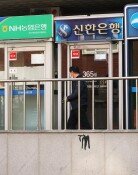Fears of more bank failures loom over US financial market
Fears of more bank failures loom over US financial market
Posted March. 15, 2023 07:43,
Updated March. 15, 2023 07:43
U.S. President Joe Biden has pledged full deposit insurance in response to the aftermath of Silicon Valley Bank’s (SVB) bankruptcy, but concerns of further bank failures are intensifying, particularly among small and medium-sized banks. On Monday and Tuesday, the global financial market suffered a market capitalization loss worth 607 trillion won, with US small and medium-sized bank stocks plummeting over 60%. Due to concerns about financial risks stemming from the U.S., the Korean stock market (KOSPI) tanked by 2.56%.
On Monday, just before the New York Stock Exchange opened, President Biden emphasized that “our banking system is safe,” but this was not enough to assuage investor fears. On the same day, the stocks of First Republic Bank and Western Alliance Bancorporation, based in San Francisco and Arizona respectively, fell by 61.8% and 47.06%. The rapid drop in the stock prices of local small and medium-sized banks also caused trading in 12 bank stocks to temporarily halt in the morning.
Although the U.S. Federal Reserve (Fed) announced that it would provide virtually unlimited liquidity support for one year on condition of collateral, the shock of two historic U.S. bank closures in three days remained palpable.
The sense of crisis spread to the Asian stock market on Tuesday. Notably, KOSPI closed at 2,348.97, a drop of 2.56% compared to the previous day, suffering the largest decline among Asian stock markets since September 2, 2022 (-3.02%). Foreign investors with weakened investment sentiment sold approximately 640 billion won worth of shares in the Korean stock market. The KOSDAQ index closed at 758.05, dipping 3.91% from the previous day. The two-day loss of global financial stock markets surged to 465 billion dollars.
Concerns about financial institutions including banks reflect the market jitters over the SVB incident and the failure of bonds, which were previously considered safe assets. According to the U.S. Federal Deposit Insurance Corporation (FDIC), unrealized losses on bonds due to the sharp decline in bond prices as of the end of last year amounted to 620 billion dollars.
As the cumulative burden of over a year of high-intensity tightening by the Fed has exposed the vulnerability of the U.S. financial system, the Fed’s interest rate hikes are expected to be stalled. Some securities firms, including Nomura Securities, have even forecasted interest rate cuts. The complexity of the functions involving the spread of the SVB crisis, the path of the Fed’s monetary policy, and inflation trends have further stoked market volatility and uncertainty.
Hyoun-Soo Kim kimhs@donga.com · Min-Woo Park minwoo@donga.com



![“한동훈, 정치생명 걸고 무소속 출마해 평가받는 것 고려할만”[정치를 부탁해]](https://dimg.donga.com/c/138/175/90/1/wps/NEWS/IMAGE/2026/01/19/133186982.1.jpg)
![‘건강 지킴이’ 당근, 효능 높이는 섭취법[정세연의 음식처방]](https://dimg.donga.com/c/138/175/90/1/wps/NEWS/IMAGE/2026/01/18/133181291.1.jpg)


